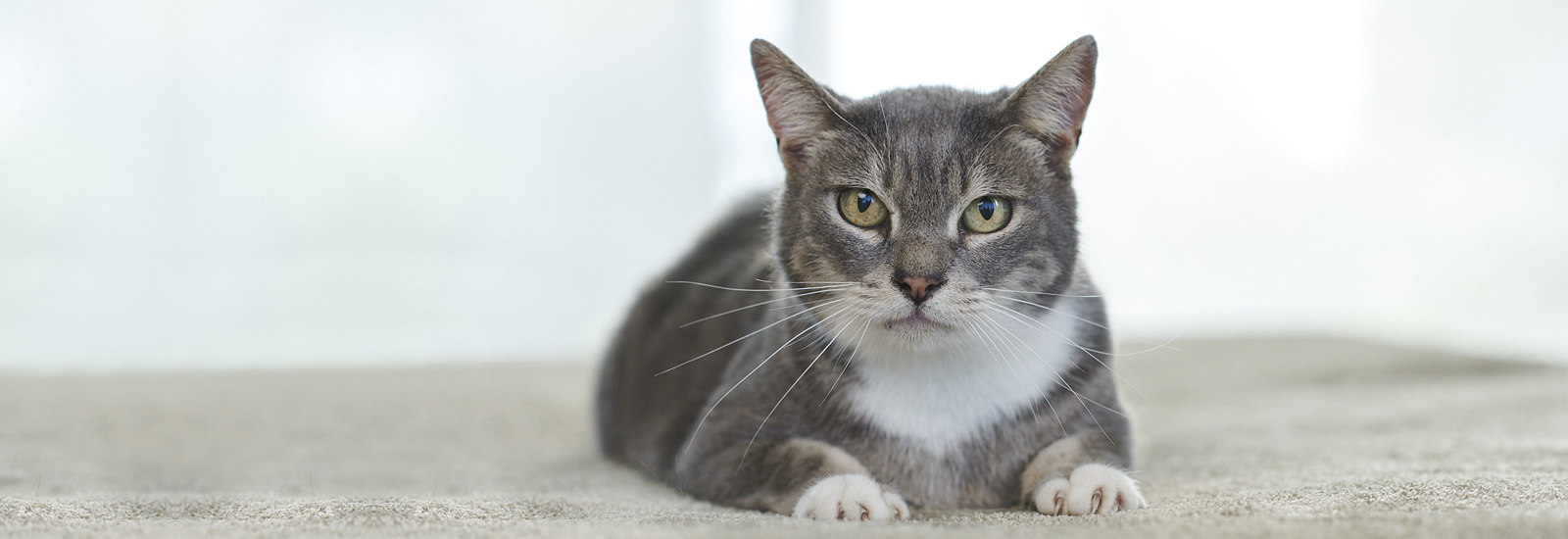It is not only humans who get allergies - cats can also be affected. It is often difficult to determine the cause of an allergic reaction in cats.
An allergy is defined as excessive activity of the immune system. The allergen, a substance which is harmless in itself, triggers a strong immune response in the form of inflammation. Contact with the allergen - whether in the air, through skin contact or in food - leads to a strong immunological defence reaction. In cats it is often the skin that is affected. This causes itchiness so they scratch themselves until the skin is raw or lick themselves until they are bald. Some cats also develop chronic digestive problems which can be recognised in the form of diarrhoea, vomiting, flatulence and loss of appetite. If the respiratory tract is affected, this causes a sniffling nose, watery eyes, coughs, and asthma.
Allergies in cats
Treating an allergy
The general approach to treating an allergy is to avoid the allergen in question. An exact diagnosis is vital in this regard. It is often a difficult and protracted process to find out what allergens are causing the problem. The first step, moreover, is first of all to ensure that the problem actually does ensue from an allergy as many other conditions can cause similar symptoms. Unfortunately, there is no such thing as a simple and reliable allergy test. Very important is a thorough examination which will also rule out other conditions. If the suspicion of an allergy is confirmed, systematic attempts should be made to detect the allergen triggering the reaction (e.g. caused by fleas, pollen or grasses). If the allergen is from the food, a so-called elimination diet is the only way to ensure correct diagnosis.
The process of allergy treatment
A lot of patience is usually required: depending on the severity of the allergy it can sometimes take weeks until symptoms are alleviated and the diagnosis can be confirmed. In the case of particularly tricky food-related allergies, it can take up to 12 weeks before the cat responds to treatment. Once the allergen has been identified, however, the animal has good prospects of a full recovery if the cat follows a special diet in future to avoid the food-based allergen. In the case of grasses and pollens, subsequent attempts can be made to help the animal by implementing desensitisation measures. And flea bites can be prevented through the use of a flea control product from a vet.
Diagnosis of a food-related allergy
If an elimination diet has provided evidence of a food allergy, the next question is which food can be given as an alternative. The cat can now tolerate the elimination diet but in many cases this is not a long-term solution. The component of the food causing the allergy must be identified so that all foodstuffs containing this component can be avoided in future. To this end, suspected food components are gradually added to the elimination diet. If after two weeks no itchiness has occurred, the test can be continued using other suspect components. If the cat has a reaction to a component, this is to be strictly avoided in all food in future. Further components can then only be tested, of course, once the symptoms have subsided. The elimination diet must therefore be adhered to until the cat is free of symptoms.
